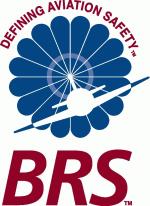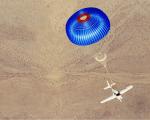It was the summer of 1983, and Jay Tipton’s plan was simple: He had invited his wife Jo and their 3 year old daughter Sarah to come outside their Colorado home to watch dad fly his light aircraft low and slow over the house. Tipton had planned on dropping a love note to his wife as he flew by and then watch it flutter down to her waiting hands. But he never got the chance.
A thermal caught one wing of his aircraft and shoved it skyward. In less that a second, the nose of his plane dropped and Tipton’s aircraft rolled over on its back and entered a spin, a flight condition often referred to a graveyard spiral. He probably had little more than a hundred feet left before he hit the ground when he pulled the bright red handle that hung above his head. Boom! He heard the sound of a detonation. A moment later, his whole airplane swung back upright and he was hanging under a parachute which gently set him down in a nearby field.
“It might sound very melodramatic but when I climbed out of the wreckage and saw my wife and 3-year-old daughter running to me from across the field, I could have cried,” Tipton wrote in a letter to Ballistic Recovery Systems (BRS), a then small company in Minnesota which manufactured the emergency parachute. He had installed the BRS parachute system just two months before it saved his life.
As miraculous as the story might sound, surprisingly it is not uncommon. Since Jay Tipton deployed the first whole-airframe parachute in 1983, BRS has documented dozens and dozens of such stories from pilots flying BRS-equipped aircraft all over the world. And on April 11, 2007, James Turpen departed from Tucson, Arizona in a Cirrus SR22 for a flight back to his home in Colorado. Not long into the flight, Turpen began to have difficulties and when his instruments warned him of an imminent impact with the terrain—terrain he couldn’t see because he was inside the clouds—he made the command decision to pull the red handle above his head. He heard the solid-rocket motor shoot skyward, deploying the aircraft’s whole airplane parachute. Moments later, the Cirrus came to a gentle rest in a pine forest in western New Mexico. Turpen walked away from the crash and became the 200th person whose life was saved by deployment of a BRS whole-airplane parachute.
“When I first got the news that we’d just saved our 200th life, I just closed my eyes and took a deep breath,” says BRS CEO Larry Williams. “It just reminded me and all of us here at BRS that what we do really does make a difference.”
BRS had been making whole-airplane parachute systems for recreational aircraft for a decade when the National Aeronautics and Space Administration approached them. NASA offered BRS a Small Business Innovation Research grant to use the company’s expertise to design and test alternate materials for parachutes, as well as continuing the development of a ‘continuous disreefing device,’ a technology used in BRS systems today.
It was only a few years later that two brothers in Minnesota took note of the remarkable BRS parachute system. Alan and Dale Klapmeier were designing an innovative new airplane they called a Cirrus, and approached BRS about including a parachute system. By 1998, a Cirrus SR-20 began flying as the only FAA-certified airplane in the world which had a whole-airplane BRS parachute system. Cirrus and BRS had to wait several years for the real payoff. In October of 2002, Lionel Morrison, a 53 year-old architect, pulled the red handle in his Cirrus and landed unharmed, thanks to the FAA-certified BRS parachute that brought the disabled aircraft safely back to the ground on a golf course north of Dallas, Texas. When the media finally got their chance to interview Morrison and ask if would ever even think about getting into an airplane again, he said, “I had a good airplane with a great backup system and it worked! So I have MORE confidence now, not less confidence….”
As simple as it might sound, the BRS system is actually a high tech marvel. A whole-airplane parachute is exponentially more complex than parachutes typically used by sky divers. The single handle available to the pilot in the cockpit is connected to a state-of-the-art solid rocket engine, technology borrowed from the military’s F-16 ejection seat system. That rocket deploys the whole-airplane parachute in little more than a second and the aircraft then floats all the way back down to ground, passengers and all.
The BRS systems which have saved 200 lives is now undergoing tests with much larger canopies and with much larger load carrying capabilities. The reason? Personal jet manufactures along with a legion of high performance aircraft designers have requested their newest aircraft to include BRS parachutes. When this wave of new designs begin final flight testing, they will become the largest and fastest passenger aircraft in world to take advantage of Ballistic Recovery System whole-aircraft parachute technology.
“It’s like seatbelts and airbags,” Jay Tipton says, nearly 25 years after being the first person to deploy a BRS parachute. “We now expect those safety items to be in every car and I think the same thing is happening with emergency parachutes in airplanes.” As the years have gone by, he admits to replaying that moment he used the parachute over and over again in his head. “Because of that BRS system, I got to watch my daughter grow up and become successful, I got to be with my sons as they grew up and became successful and I got to continue to enjoy my marriage with Jo. None of that would have been possible if it wasn’t for my parachute. It saved my life and I’m very thankful.”
One thing is different today than when Tipton first pulled his parachute all those years ago. Now there are 200 other people that know exactly how he feels.

